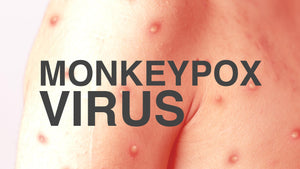
How to Cope with Incontinence?
- Stress Incontinence - During stress incontinence, there is an outflow during certain physical activities such as sneezing, laughing, lifting something, and sexual intercourse. Stress incontinence results from the weakening of either pelvic floor muscles or the sphincters responsible for control. The muscles are weakened by a number of causes such as injury to the urethra, post-childbirth, and menopause. The condition worsens before the menstrual period. Women are more likely to suffer from stress in-consistence than men. Treatment for stress incontinence includes performing exercises that strengthen the pelvic floor muscles such as Kegel exercises. Biofeedback therapy may be used along with changes in lifestyle such as reducing consumption of caffeine, regulation of the amount of fluid consumption, and maintaining an active lifestyle.
- Urge Incontinence - It is also referred to as an overactive bladder. There is involuntary urinary loss due to a sudden urge to urinate as the bladder contracts earlier than it should. Urge incontinence results due to factors such as infections of the urinary tract, nerve problems like multiple sclerosis, improper functioning of the bladder due to conditions like diabetes, Parkinson’s disease, and bladder cancer.
- Functional Incontinence – This type of incontinence occurs due to the inability of the patient to reach the toilet on time due to various underlying diseases like arthritis and Parkinson’s disease.
- Overflow Incontinence – Overflow incontinence occurs when the bladder is unable to empty completely and that leads to constant dribbling of urine
- Mixed Incontinence – Mixed Incontinence occurs when more than one type of incontinence is present
- Behavioral techniques – Behavioral techniques for the treatment of incontinence involve following behavioral changes which can reduce the symptoms associated with incontinence. This includes techniques such as bladder training and restraining, periodically scheduling a trip to the toilet, managing diet and fluid intake, and practicing techniques that allow for the complete emptying of the bladder.
- Medications – Medications may supplement the treatment of Incontinence. Anticholinergics, alpha-blockers and topical estrogen are commonly prescribed medications.
- Interventional Therapies – These therapies include implanting devices or injecting substances which can help with incontinence. This includes implantation of nerve stimulators, botox injections into the bladder muscle, and injecting bulking material into the tissue surrounding the urethra.
- Surgery – Surgery may be recommended for people who have not responded well to other treatments. Bladder neck suspension, prolapse surgery and implantation of the artificial urinary sphincter are often the surgeries of choice.
- Absorbent Pads and Catheters – These products greatly reduce the discomfort associated with incontinence. These include absorbent pads and garments and urinary catheters.
- Brief/ Panty Style Adult Diapers – These adult diapers have tabs on the sides and a cloth-like or plastic backing. Cloth backing ones makes less noise than plastic and is the preferred type.
- Pull Up Adult Diapers - These pull on like underwear and have no tabs for attachment. They are much easier to take on and off in comparison to the brief style of adult diapers.
- High Retention Capacity - Prevents build-up of waste in the diaper and warrants skin safety. Thereby avoiding any irritation, skin rashes and pressure sores
- High Absorbency – Should be highly absorbent to limit the contact time with the skin preventing any rashes and sores
- Control Of Microbial Growth – Some adult diapers have agents that prevent the growth of microbes. The atmosphere of an adult diaper is a breeding ground for bacteria that can grow and multiply causing serious complications such as urinary tract infections (UTIs)
- Odour Control – Odour control is a very critical feature of adult diapers. Odor not only makes the patient uncomfortable but may also induce unnecessary embarrassment. If a diaper has microbial growth control, the odor is significantly reduced
- Discreet – An ideal adult diaper is discreet and should not be too bulky. It should fit snugly without causing any discomfort to the user
- Leak Proof – Diapers with super absorbent polymers should be bought as they prevent any spillage and leakage
- Cost – Since adult diapers have to be used frequently by the wearer, they shouldn’t be extremely expensive and be affordable for the patient
- Based on the Number of Ports -
- Two Way: Two way Foley catheters have two ports for drainage and inflation
- Three-Way: Three-way Foley catheters have an additional port for irrigation
- Based on the type of Tip -
- Code Tip: A 45-degree bend at the tip to bypass an enlarged prostate
- Council Tip: A small hole at the tip due to which they can pass over a wire
- Based on the Material –
- Latex – Foley catheters are commonly made from latex and very cost-effective
- Silicone or silicone coated: These are considerably more expensive but are extremely useful for patients with latex allergies
Male External Catheters These catheters are commonly known as condom catheters and are placed outside the patient’s body. This type of catheter consists of a sheath coated with an adhesive, convolution, and a tip that attaches to the urinary tubing. The catheter is connected to a urine bag which is usually attached to the leg. The risk of damaging the urethra is least with a male external catheter. However, latex infection and soreness can be a risk external catheters usually need to be changed daily but can be easily self-administered without the assistance of a caregiver or nurse. These catheters are commonly used for patients that don’t have urine retention problems but other functional or mental disabilities Intermittent Catheters (or Short Term Catheters) Nelaton catheters are the most common type of short term catheters. These types of catheters are also known as in and out catheters. Nelaton catheter consists of a catheter tip, drainage eyes, and funnel end which attaches to the tubing of a drainage bag. The patient is taught by a medical professional how to use such a catheter themselves or with the aid of a caregiver. This catheter is inserted into the body through the urethra or a small hole created in the lower abdomen. Nelaton catheters reduce the risks associated with indwelling catheters as they don’t stay in the bladder continuously. They also reduce the risks of urinary tract infections (UTIs), male infertility, and urinary strictures. These catheters are very frequently used to help patients drain their bladders after surgery. The catheter to be used should be recommended by the physician. It is imperative to maintain good hygiene and follow the medical professional’s guidelines to make sure no complications arise due to the use of the catheter.
Dealing with Incontinence Not only can dealing with incontinence influence a person’s social and personal life, it can also lead to several medical complications like urinary tract infections and skin problems. Incontinence is an easily manageable condition. The stigma associated with this condition should be eradicated and people should find treatment at the right time to prevent the condition from progressing. Dealing with incontinence shouldn’t be a secret struggle; a person living with incontinence can lead a normal life by managing the condition with the help of a physician and the incontinence products available in the market.







